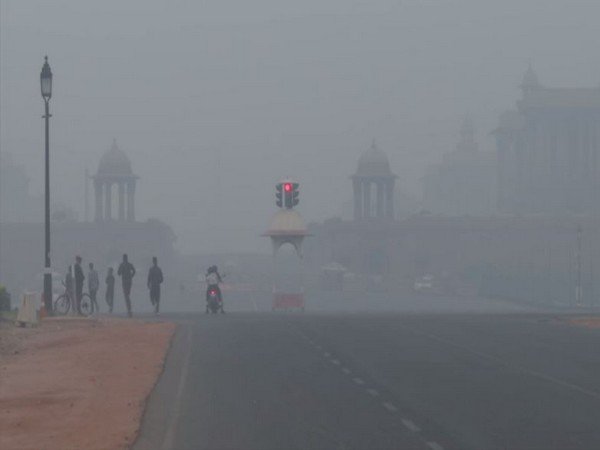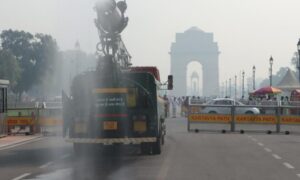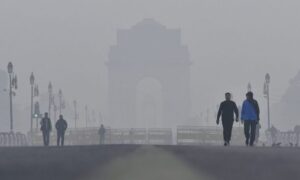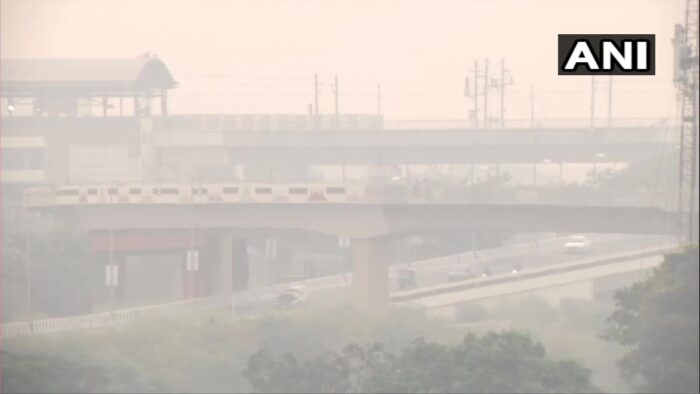
Picture : Twitter / ANI
Delhi’s air quality worsened again and slipped into the ‘severe’ category on Tuesday morning, reported PTI.
Factors such as low surface wind speed, high stubble fire count (1846 on November 10) and the northwesterly direction of the surface wind. While stagnant and calm conditions does not allow pollutants to disperse northwesterly winds favour transport of stubble burning plume into Delhi, leading to drop in regional air quality.
At 9:36 am, the air quality index (AQI) was 414. The AQI at Bawana, Wazirpur, Anand Vihar and Rohini was 445, 442, 442 and 440 respectively.
According to the government air quality monitoring service SAFAR, the city’s air quality was in very poor category on Monday which turned to severe by the evening. The average AQI stood at 360 on Sunday.
In the National Capital Region (NCR), the AQI in Noida was 436, while Ghaziabad recorded an AQI of 445. Greater Noida, Gurgaon and Faridabad recorded AQI of 436, 365 and 404 respectively.
On Monday, most of the 37 air quality monitoring stations in Delhi recorded air quality in the ‘severe’ category.
An AQI between 0-50 is considered ‘good’, 51-100 ‘satisfactory’, 101-200 ‘moderate’, 201-300 ‘poor’, 301-400 ‘very poor’ and 401-500 ‘severe’. Above 500 falls in the ‘severe plus’ category.
With the winter setting in, a dip in the minimum temperature makes the air cold and heavy leading to accumulation of pollutants close to the ground.
Delhi’s AQI is also expected to deteriorate further, and remain in the ‘severe’ category until at least tomorrow. Air quality forecast suggests Delhi’s AQI could be as high as 484 on Wednesday—just 16 short of ‘emergency’ or ‘severe plus’ category.
However, to the relief of the residents, the region might finally experience some respite of sorts on Thursday, as an improvement towards ‘very poor’ air quality is predicted from November 14 onwards.
[the_ad id=’22723′]

















